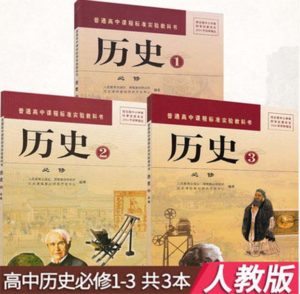 China is set to issue its revised Chinese history textbooks for Middle and High schools from this fall semester. The revised textbooks state that Chinese territories include the Diaoyu Islands, South China Sea, Xinjiang, Tibet and Taiwan, and claims they have all been part of China since the Han dynasty (206BC-AD25).
China is set to issue its revised Chinese history textbooks for Middle and High schools from this fall semester. The revised textbooks state that Chinese territories include the Diaoyu Islands, South China Sea, Xinjiang, Tibet and Taiwan, and claims they have all been part of China since the Han dynasty (206BC-AD25).
Mr Ye Xiaobing, a history professor at Capital Normal University in Beijing, and Director of the History Teaching Professional Commission of the Chinese Society of Education, said the contents of the textbooks highlight the history of China as a united multi-nationality country and that the books’ message is to promote national sovereignty, territorial integrity and ethnic unity.
The revision process for the history books started in December 2017; the revised editions are to be distributed into Chinese schools in six provinces in September: Beijing, Tianjin, Shanghai, Shantung and. The aim is to get them into every school in China by 2022.
Observers in mainland China believe that a stronger education on national territory and unity for the younger generation is important in order to strengthen their patriotism and party loyalty, saying this could counter calls for separatism and the democracy protests such as are ongoing in Hong Kong and Taiwan.
China is known to have taken liberties with the histories of its own minority peoples in order to educate the new generations using methods that promote party patriotism and nationalism.
Earlier this year in February, Primary students in Shigatse, a prefecture level city in Tibetan Autonomous Region, were issued with a new textbook written in both Tibetan and simplified Chinese. The textbook, aimed at Tibetan students, teaches them about integration of Han and Tibet cultures. A report in the Chinese state media Global Times said the textbook include topics on patriotism, history and geography of the region,a lesson on civility and a comparison between Tibet’s former oppressive ways and the change and improvement brought by China into the lives of Tibetans.




 Print
Print Email
Email